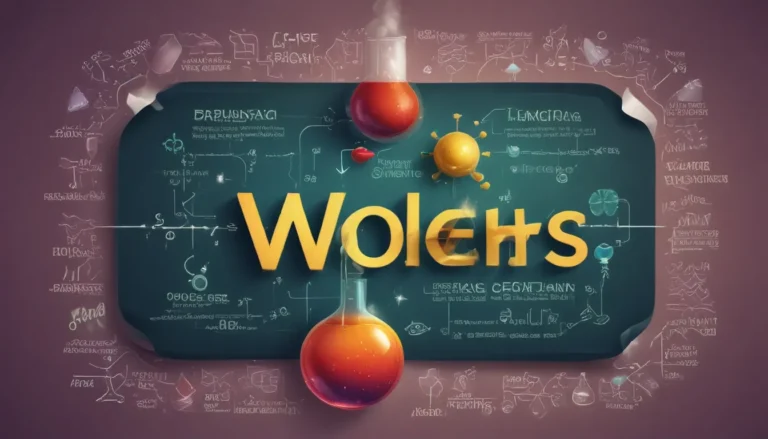A Note About Images: The images used in our articles are for illustration purposes only and may not exactly match the content. They are meant to engage readers, but the text should be relied upon for accurate information.
In the ever-evolving landscape of technology, extrinsic semiconductors stand out as enigmatic compounds that power many of the devices we use daily. From smartphones to solar panels, these semiconductors play a vital role in shaping our modern world. While the intricacies of extrinsic semiconductors may seem complex, fear not – we’re here to guide you through this fascinating realm.
Delving Deeper into Extrinsic Semiconductors
Extrinsic semiconductors, infused with impurities through a process known as doping, boast enhanced electrical conductivity. This transformation allows for efficient electricity flow, enabling the operation of various electronic devices that we rely on.
The Power of Doping
Doping entails the deliberate addition of impurities, such as boron or phosphorus, to the semiconductor lattice. By introducing an excess or deficiency of electrons, doping alters the conductivity and electrical properties of the material, paving the way for enhanced functionality.
N-Type vs. P-Type Semiconductors
Extrinsic semiconductors are categorized into two main types: N-type and P-type. N-type semiconductors exhibit an excess of electrons due to the doping with elements like phosphorus, while P-type semiconductors feature a shortage of electrons achieved through substances like boron.
Unveiling Quantum Phenomena
At ultra-low temperatures, extrinsic semiconductors showcase quantum effects, revealing phenomena like quantum tunneling and confinement. These occurrences are instrumental in the development of cutting-edge nanoelectronics and quantum computing technologies.
The Hall Effect
The Hall effect, pioneered by physicist Edwin Hall, plays a pivotal role in extrinsic semiconductors. When a magnetic field is applied perpendicular to the current flow, it induces a voltage difference across the material, offering insights into the charge carrier type and concentration.
Tailoring Resistance
Fine-tuning the level of doping in extrinsic semiconductors allows for precise control over their electrical resistance. This characteristic is essential in crafting a variety of electronic devices, including transistors and integrated circuits.
Temperature Sensitivity
The electrical performance of extrinsic semiconductors is significantly influenced by temperature variations. As temperatures fluctuate, the number of charge carriers and their mobility undergo changes, impacting the overall device efficacy.
Illuminating Optoelectronics
Extrinsic semiconductors play a critical role in optoelectronic devices like LEDs and photovoltaic cells. Through strategic doping manipulation, researchers can adjust the optical properties of semiconductors, facilitating efficient light emission or absorption.
Essential Contributions to Solid-State Electronics
Extrinsic semiconductors have been instrumental in advancing solid-state electronics. Their ability to control and amplify electrical signals has revolutionized sectors such as telecommunications, computing, and information technology.
Pursuit of Purity
To achieve optimal performance, extrinsic semiconductors necessitate high-quality, defect-free crystals. Extensive research and manufacturing endeavors focus on producing pristine crystalline structures to minimize impurities and ensure uniform electrical behavior.
Fuelling Nanoengineering Advancements
Extrinsic semiconductors have made significant contributions to nanoengineering. By manipulating the material at the atomic and molecular levels, scientists can craft novel semiconductor architectures with enhanced functionalities and improved device performance.
Versatility from Transistors to Solar Cells
Extrinsic semiconductors form the backbone of modern electronics, serving as the foundation for transistors, integrated circuits, and other essential electronic components. Additionally, these semiconductors play a crucial role in converting sunlight into electricity in photovoltaic cells.
Unraveling the Enigmatic World of Extrinsic Semiconductors
As we demystify the intricacies of extrinsic semiconductors, their allure continues to captivate scientists and engineers seeking breakthrough technologies. The 12 intriguing facts about extrinsic semiconductors highlighted above exemplify the thrilling journey of exploration and innovation within this domain.
So, the next time you encounter a smartphone, computer, or solar panel, remember that the underlying foundation of these remarkable devices traces back to the mysterious realm of extrinsic semiconductors.
Embracing the Future of Technology
In essence, extrinsic semiconductors play a pivotal role in modern technology by enabling precise control of electrical conductivity across a myriad of devices. Doped with impurities to tailor their electronic properties, these semiconductors offer versatility and customization for specific applications. Understanding the enigmatic nature of extrinsic semiconductors is crucial in unleashing their potential and propelling advancements in electronics and technology.
From the intriguing concept of doping to the intricate balance between electron and hole concentrations, these 12 facts shed light on the enigmatic world of extrinsic semiconductors. With their significant impact on electronics and diverse applications, delving into the study of extrinsic semiconductors proves indispensable for technological progress.
Exploring Further: Intrinsic Semiconductors
For those eager to expand their knowledge further, our exploration of intrinsic semiconductors awaits. Discover the unique properties and applications of these semiconductors, from fundamental principles guiding their behavior to cutting-edge research expanding horizons in solid-state electronics. Embark on an enlightening journey through the captivating realm of intrinsic semiconductors, unravelling more enigmatic facts to deepen your understanding of semiconductors.
Conclusion
In conclusion, extrinsic semiconductors emerge as vital components in the realm of technology, fueling advancements across various sectors. By harnessing the power of intentional doping, these semiconductors enable tailored electrical conductivity to meet the demands of contemporary electronic devices. Embracing the mysteries of extrinsic semiconductors allows for innovation and progress, shaping the landscape of electronics and technology.
FAQs on Extrinsic Semiconductors
-
What defines an extrinsic semiconductor?
Extrinsic semiconductors are materials intentionally doped with impurities to modify their electrical conductivity. -
What purpose does doping serve in extrinsic semiconductors?
Doping is essential for controlling and manipulating the electronic properties of semiconductors, enhancing their functionality for specific applications. -
How do extrinsic semiconductors differ from intrinsic semiconductors?
Intrinsic semiconductors are pure materials without intentional doping, whereas extrinsic semiconductors undergo deliberate impurity addition to alter their properties. -
Which impurities are commonly used in extrinsic semiconductors?
Elements like boron, phosphorus, and arsenic are prevalent impurities employed in extrinsic semiconductors. -
Why are electron and hole concentrations significant in extrinsic semiconductors?
The balance between electron and hole concentrations dictates the overall electrical conductivity and behavior of extrinsic semiconductors. -
In what way do extrinsic semiconductors contribute to solar energy endeavors?
Extrinsic semiconductors, particularly doped silicon, play a crucial role in converting sunlight into electricity in solar cells. -
How do extrinsic semiconductors impact the field of telecommunications?
Extrinsic semiconductors are indispensable for telecommunications devices, aiding in transceiver functioning and signal amplification. -
Can the properties of extrinsic semiconductors be tailored for specific applications?
Absolutely, by selecting suitable dopants and concentrations, extrinsic semiconductors can be customized to meet various electronic device requirements. -
Do extrinsic semiconductors exhibit higher conductivity than intrinsic semiconductors?
Indeed, intentional doping enhances the conductivity of extrinsic semiconductors relative to their intrinsic counterparts. -
What are practical examples of extrinsic semiconductor applications?
Extrinsic semiconductors are prevalent in computer processors, where transistors are pivotal for executing intricate calculations. -
Are ongoing research endeavors aiming to enhance extrinsic semiconductor properties?
Continual exploration into new doping methodologies and materials seeks to optimize extrinsic semiconductor performance for numerous applications.
Dive into the captivating realm of extrinsic semiconductors, where each fact unlocks a deeper understanding of their role in shaping the technology we rely on. Join us in exploring the vast possibilities these enigmatic compounds offer, as we embark on a journey of discovery and innovation in the realm of electronics and beyond. Trust in our dedication to delivering authentic and insightful content, guiding you through the complexities and intricacies of extrinsic semiconductors.
Embark on a journey of discovery as we unravel the mysteries of extrinsic semiconductors, laying the groundwork for a deeper understanding of the technologies that fuel our daily lives. Explore the realm of semiconductors with us, where each fact uncovered is a step closer to unlocking the potential of these remarkable materials.





